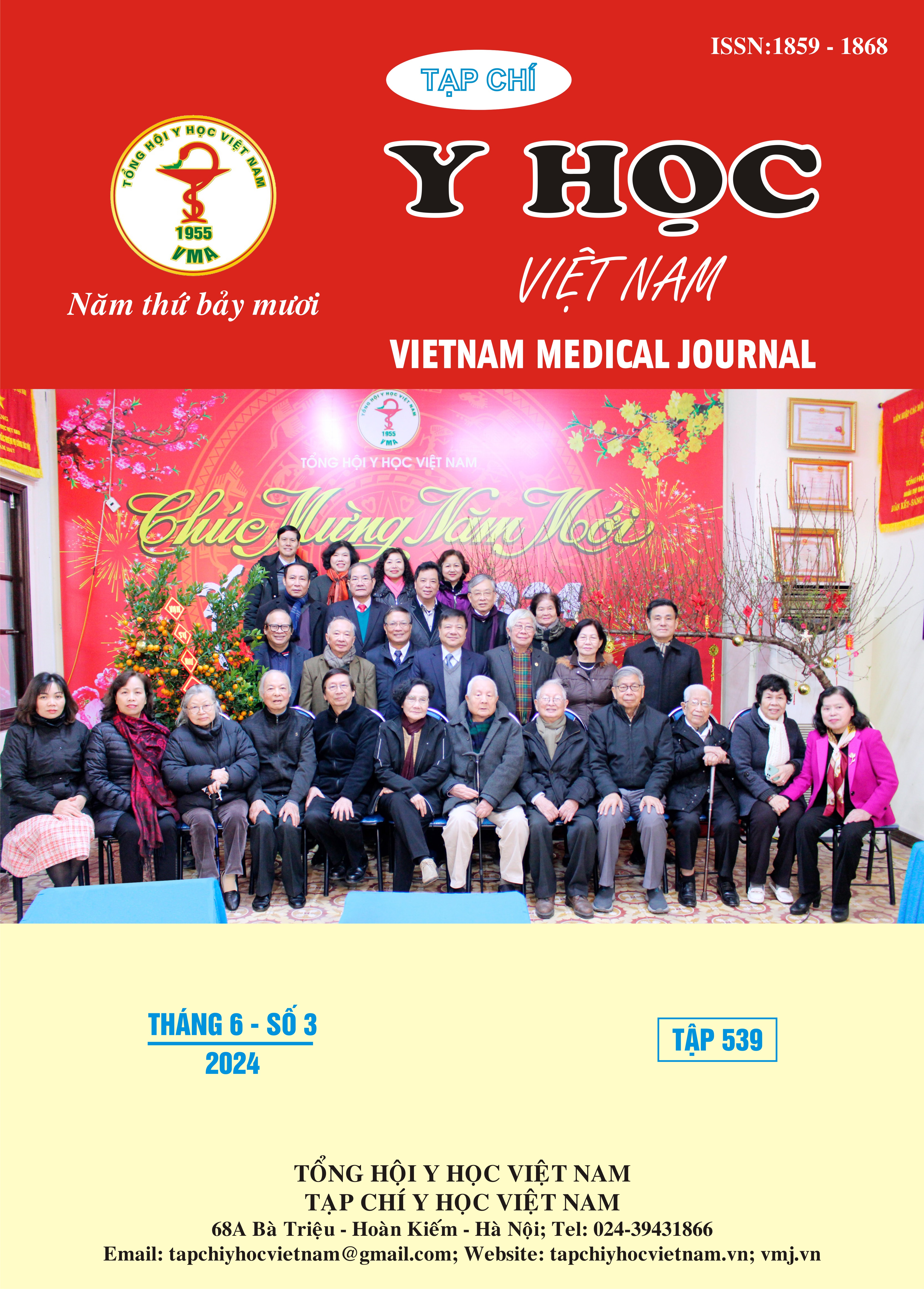EVALUATION OF THE RESULTS OF CATARACT TREATMENT BY PHACOEMULSIFICATION WITH EXTENDED DEPTH OF FOCUS INTRAOCULAR LENSE AT E. HOSPITAL
Main Article Content
Abstract
Purpose: To evaluate the results of cataract treatment by phacoemulsification with extended depth of focus intraocular lense at E. hospital. Subjects and Methods: A prospective descriptive study on 78 eyes of 63 patients with cataract at E. hospital from April 2021 to February 2022. Results: Studying 78 eyes of 63 patients with an average age of 71.14 ± 6.85 years (49-91 years old) with distance visual acuity of 1.14±0.65 logMAR and corneal astigmatism of -0.92 ± 0.67 Diop; in which 62 eyes are placed with Isopure 1.2.3 artificial lens and 16 eyes are placed with Tecnis Eyhance artificial lens. 39.7% of patients had systemic comorbidities such as hypertension, diabetes, cardiovascular disease, etc. Compared with before surgery, postoperative visual acuity increased significantly at all follow-up visits One month after surgery, the average uncorrected distance vision was 0.18 ± 0.11 logMAR; uncorrected intermediate visual acuity was 0.21 ± 0.11 logMAR and uncorrected near vision was 0.47 ± 0.12 logMAR. At all follow-up examinations, the distance, intermediate and near vision of eyes with Tecnis Eyhance artificial lenses all provided better visual acuity compared to eyes with Isopure 1.2.3 lenses. However, this difference was not statistically significant with p>0.05. One month after surgery, undesirable symptoms such as halos and glare were not seen in 56.4% (44/78 eyes). In which, the rate of halo and glare in the Isopure 1.2.3 group was 45.2%, higher than the Tecnis Eyhance group (37.5%). This difference is statistically significant with p < 0.01. 97.4% of patients are satisfied with the treatment results. Conclusions: Treatment of cataracts by phacoemulsification with extended depth of focus intraocular lense gives patients a good far visual acuity and improves intermediate visual acuity. Unexpected symptoms after surgery was uncommon and almost patients satisfied with the result of the treatment.
Article Details
Keywords
cataract, extended depth of focus intraocular lense
References
2. Bilbao-Calabuig R, Stodulka P. An innovative EDOF Isofocal IOL Technology. 2020:4.
3. Stodulka P, Slovak M. Visual Performance of a Polynomial Extended Depth of Focus Intraocular Lens. Open J Ophthalmol. 2021; 11(3):214-228.
4. Son HS, Kim SH, Auffarth GU, et al. Prospective comparative study of tolerance to refractive erros after implantation of extended depth of focus and monofocal intraocular lenses with identical aspheric platform in Korean population. BMC Ophthalmol. 2019.
5. Paik DW, Park JS, Yang CM, et al. Comparing the visual outcome, visual acuty, and satisfaction among three types of multifocal intraocular lenses. Sci Rep. 2020;10:14832.
6. Nguyễn Quốc Đạt. Kết quả phẫu thuật Phaco đặt thể thủy tinh nhân tạo ISOPURE 1.2.3. Luận văn thạc sỹ y học. Đại học Y Hà Nội. 2021.


